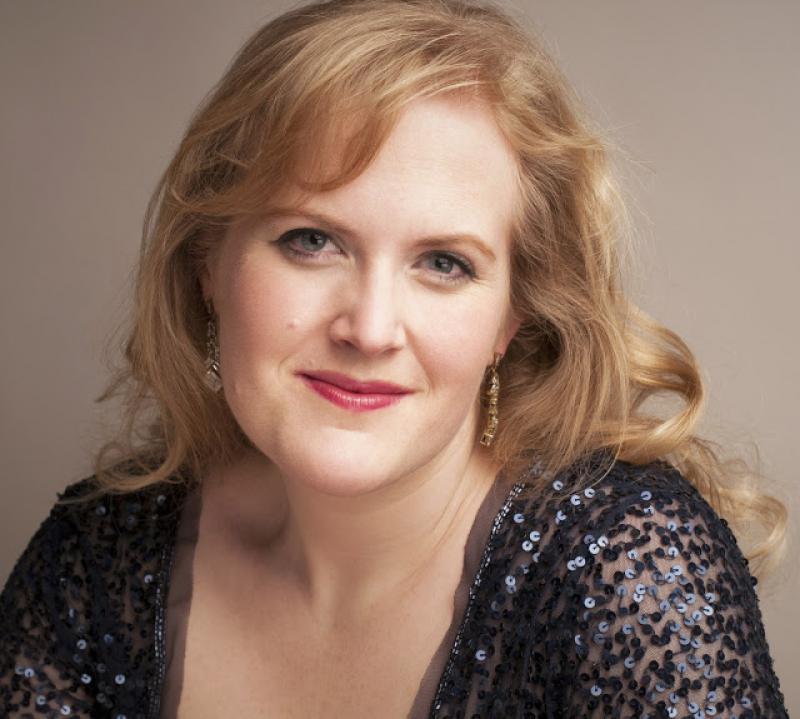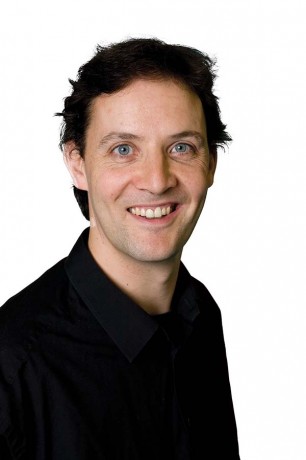Die Feen, Chelsea Opera Group, Queen Elizabeth Hall | reviews, news & interviews
Die Feen, Chelsea Opera Group, Queen Elizabeth Hall
Die Feen, Chelsea Opera Group, Queen Elizabeth Hall
The 20-year-old Wagner's uninspired but ambitious first opera strongly cast and conducted

Like Prokofiev’s The Love for Three Oranges and Puccini’s Turandot, Wagner’s first opera – The Fairies in English – has its roots in a “theatrical fable” by the 18th century Venetian playwright Carlo Gozzi. There the resemblances end. Only Prokofiev follows Gozzi’s playful mix of commedia dell’arte and fairy-tale characters.
If any conductor can stir the lumps in young Wagner's very thick porridge, it’s the dynamic Dominic Wheeler (pictured below), and if any company can light the dramatic touchpaper in a concert performance, it’s the Chelsea Opera Group, with its bold instinct for casting fine singers and its enthusiastic semi-professional orchestra. Wheeler instantly made the violins rise heroically in their pure-Weber upsurges throughout the overture, with its one hint of things to come in a phrase rhythmically identical to the one in The Flying Dutchman’s Act Two finale.
 That’s it as far as memorable long lines go, but the story and the insane musical demands loaded on its three principals can keep the interest stoked. The convoluted plot essentially involves the vicissitudes of a mortal, Prince Arindal, and a semi-fairy, Ada, his wife of eight years who at the beginning of the opera has vanished when asked the forbidden question about her identity and will turn to stone if he can’t resist the horrors she is forced to inflict on him and curses her for them (he does).
That’s it as far as memorable long lines go, but the story and the insane musical demands loaded on its three principals can keep the interest stoked. The convoluted plot essentially involves the vicissitudes of a mortal, Prince Arindal, and a semi-fairy, Ada, his wife of eight years who at the beginning of the opera has vanished when asked the forbidden question about her identity and will turn to stone if he can’t resist the horrors she is forced to inflict on him and curses her for them (he does).
That means the mythic devices look forward not only to Lohengrin but also to Dvořák’s Rusalka, Strauss’s Die Frau ohne Schatten – Andrew Porter’s note tells us Strauss the conductor helped prepare the first performance of Die Feen after Wagner’s death – and Sullivan’s Iolanthe, where the fairies tread much more lightly than Wagner’s booted specimens. You’d have thought that Mendelssohn’s Midsummer Night’s Dream Overture and Mozart’s The Magic Flute, with its three trials anticipating Arindal’s in Act Three, had never happened by 1833.
At least Wagner has delicate woodwind to paint Ada’s otherness, in the manner if not the matter of Brünnhilde’s humiliation in Act Three of Die Walküre. All eyes and ears, though, are on the soprano who has to manage her absurdly long and broken-backed Act Two aria in which she resolves to sacrifice immortality for love.Young New Zealander Kirstin Sharpin rose jaw-droppingly to the challenge.
 The luminous warmth enveloping her dramatic-soprano strength will make Sharpin a fabulous Straussian, and she stood in perfect contrast to the steelier glint of Elisabeth Meister (pictured left by Brian Tarr) as Arindal’s warrior sister Lora. Meister was just recovering from a heavy cold, had learnt her part in three weeks and was commuting back and forth from Lucrezia Borgias in Brussels, but you could still hear that this is an ideal Brünnhilde in the making.
The luminous warmth enveloping her dramatic-soprano strength will make Sharpin a fabulous Straussian, and she stood in perfect contrast to the steelier glint of Elisabeth Meister (pictured left by Brian Tarr) as Arindal’s warrior sister Lora. Meister was just recovering from a heavy cold, had learnt her part in three weeks and was commuting back and forth from Lucrezia Borgias in Brussels, but you could still hear that this is an ideal Brünnhilde in the making.
With Meister’s arrival in Act Two came a raising of the stakes for both the sometimes unruly chorus - sopranos holding it all together - and the orchestra. It was the start of serious vocal challenges for the likeable tenor hero, Dane David Danholt. This is a gleaming, youthful voice, ideal for Mozart’s doughtier protagonists like Tito and Idomeneo, but more mad vocal writing stretched Danholt to the limit, and beyond in Act Three. Still, conviction proved to be all, as it was for a villainess fairy suddenly thrust to the fore as his enemy, resplendent mezzo Emma Carrington as devious Farzana. The happy end, initiated by a brief harp-accompanied prize song for the hero to his now-lapidary love with everything going for it except the musical idea, had everybody smiling. A youthful opera with a young, promising cast: exactly what we need in Wagner’s bicentenary year.
rating
Explore topics
Share this article
Add comment
The future of Arts Journalism
You can stop theartsdesk.com closing!
We urgently need financing to survive. Our fundraising drive has thus far raised £49,000 but we need to reach £100,000 or we will be forced to close. Please contribute here: https://gofund.me/c3f6033d
And if you can forward this information to anyone who might assist, we’d be grateful.

Subscribe to theartsdesk.com
Thank you for continuing to read our work on theartsdesk.com. For unlimited access to every article in its entirety, including our archive of more than 15,000 pieces, we're asking for £5 per month or £40 per year. We feel it's a very good deal, and hope you do too.
To take a subscription now simply click here.
And if you're looking for that extra gift for a friend or family member, why not treat them to a theartsdesk.com gift subscription?
more Opera
 La bohème, Opera North review - still young at 32
Love and separation, ecstasy and heartbreak, in masterfully updated Puccini
La bohème, Opera North review - still young at 32
Love and separation, ecstasy and heartbreak, in masterfully updated Puccini
 Albert Herring, English National Opera review - a great comedy with depths fully realised
Britten’s delight was never made for the Coliseum, but it works on its first outing there
Albert Herring, English National Opera review - a great comedy with depths fully realised
Britten’s delight was never made for the Coliseum, but it works on its first outing there
 Carmen, English National Opera review - not quite dangerous
Hopes for Niamh O’Sullivan only partly fulfilled, though much good singing throughout
Carmen, English National Opera review - not quite dangerous
Hopes for Niamh O’Sullivan only partly fulfilled, though much good singing throughout
 Giustino, Linbury Theatre review - a stylish account of a slight opera
Gods, mortals and monsters do battle in Handel's charming drama
Giustino, Linbury Theatre review - a stylish account of a slight opera
Gods, mortals and monsters do battle in Handel's charming drama
 Susanna, Opera North review - hybrid staging of a Handel oratorio
Dance and signing complement outstanding singing in a story of virtue rewarded
Susanna, Opera North review - hybrid staging of a Handel oratorio
Dance and signing complement outstanding singing in a story of virtue rewarded
 Ariodante, Opéra Garnier, Paris review - a blast of Baroque beauty
A near-perfect night at the opera
Ariodante, Opéra Garnier, Paris review - a blast of Baroque beauty
A near-perfect night at the opera
 Cinderella/La Cenerentola, English National Opera review - the truth behind the tinsel
Appealing performances cut through hyperactive stagecraft
Cinderella/La Cenerentola, English National Opera review - the truth behind the tinsel
Appealing performances cut through hyperactive stagecraft
 Tosca, Royal Opera review - Ailyn Pérez steps in as the most vivid of divas
Jakub Hrůša’s multicoloured Puccini last night found a soprano to match
Tosca, Royal Opera review - Ailyn Pérez steps in as the most vivid of divas
Jakub Hrůša’s multicoloured Puccini last night found a soprano to match
 Tosca, Welsh National Opera review - a great company reduced to brilliance
The old warhorse made special by the basics
Tosca, Welsh National Opera review - a great company reduced to brilliance
The old warhorse made special by the basics
 BBC Proms: The Marriage of Figaro, Glyndebourne Festival review - merriment and menace
Strong Proms transfer for a robust and affecting show
BBC Proms: The Marriage of Figaro, Glyndebourne Festival review - merriment and menace
Strong Proms transfer for a robust and affecting show
 BBC Proms: Suor Angelica, LSO, Pappano review - earthly passion, heavenly grief
A Sister to remember blesses Puccini's convent tragedy
BBC Proms: Suor Angelica, LSO, Pappano review - earthly passion, heavenly grief
A Sister to remember blesses Puccini's convent tragedy
 Orpheus and Eurydice, Opera Queensland/SCO, Edinburgh International Festival 2025 review - dazzling, but distracting
Eye-popping acrobatics don’t always assist in Gluck’s quest for operatic truth
Orpheus and Eurydice, Opera Queensland/SCO, Edinburgh International Festival 2025 review - dazzling, but distracting
Eye-popping acrobatics don’t always assist in Gluck’s quest for operatic truth

Comments
Wonderful to find such an